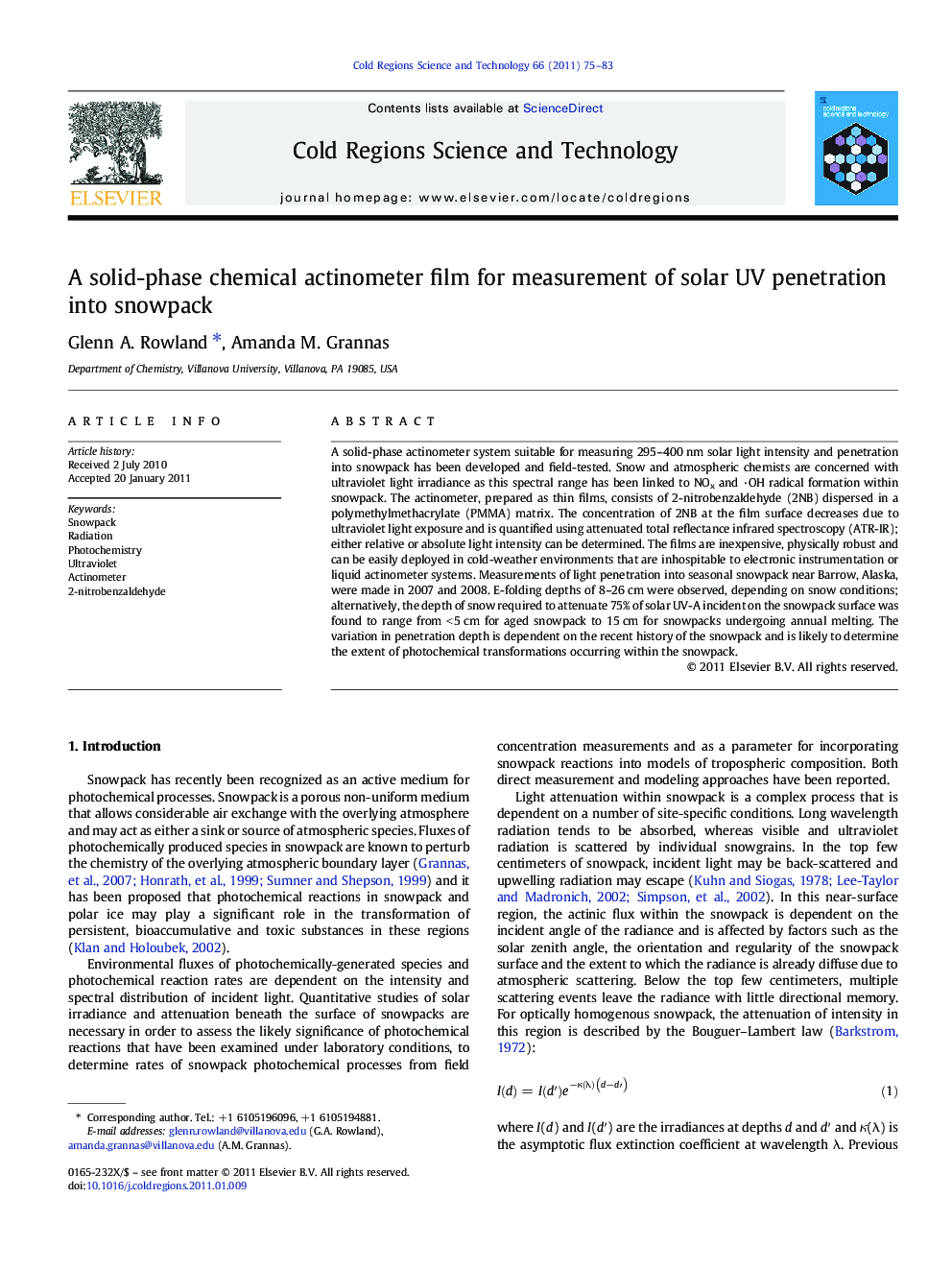| Article ID | Journal | Published Year | Pages | File Type |
|---|---|---|---|---|
| 4676150 | Cold Regions Science and Technology | 2011 | 9 Pages |
A solid-phase actinometer system suitable for measuring 295–400 nm solar light intensity and penetration into snowpack has been developed and field-tested. Snow and atmospheric chemists are concerned with ultraviolet light irradiance as this spectral range has been linked to NOx and ·OH radical formation within snowpack. The actinometer, prepared as thin films, consists of 2-nitrobenzaldehyde (2NB) dispersed in a polymethylmethacrylate (PMMA) matrix. The concentration of 2NB at the film surface decreases due to ultraviolet light exposure and is quantified using attenuated total reflectance infrared spectroscopy (ATR-IR); either relative or absolute light intensity can be determined. The films are inexpensive, physically robust and can be easily deployed in cold-weather environments that are inhospitable to electronic instrumentation or liquid actinometer systems. Measurements of light penetration into seasonal snowpack near Barrow, Alaska, were made in 2007 and 2008. E-folding depths of 8–26 cm were observed, depending on snow conditions; alternatively, the depth of snow required to attenuate 75% of solar UV-A incident on the snowpack surface was found to range from < 5 cm for aged snowpack to 15 cm for snowpacks undergoing annual melting. The variation in penetration depth is dependent on the recent history of the snowpack and is likely to determine the extent of photochemical transformations occurring within the snowpack.
► Solid-phase 2-nitrobenzaldehyde (2NB) actinometer developed for use in snowpack. ► 2NB incorporated in polymethylmethacrylate film for durability and ease of transport. ► 1st order rate constant for 2NB loss (j(2NB)) is proportional to total UV-A intensity. ► Best results obtained when film is used to compare intensities at multiple locations. ► Field-tested in Barrow, AK; measured e-folding depths in snowpack range from 8 to 26 cm.
